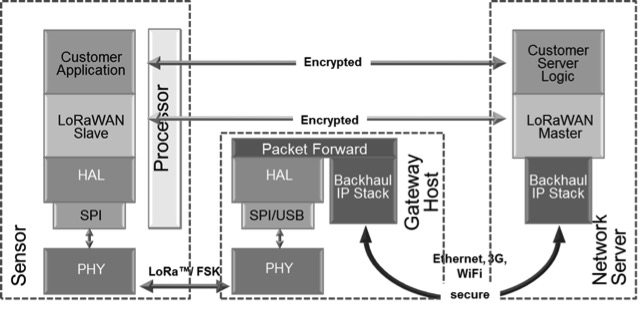There was once a time, when we were happy with being able to share images and video clips via Bluetooth at 64 Kbps speeds, and filled with wonder in amazement at the technology. We were children, so we felt elated, but the thinkers don’t stop. They innovate, they customise, and they improve the current technology to make something better, something faster. Hence came, Wi-Fi. Still the thinkers didn’t stop, and now we have LoRaWAN, as a product of their imagination.
Why LoRaWAN?
Till last year, the main mode of application for regional, national and global networks was the cellular networks. However, for many bandwidth limited applications, traditional cellular networks are deemed too expensive due to excessive power consumption and complex protocols that lower battery life. As a result, this technology finds extreme adaptability in Internet of Things (IoT) circles.
The acronym standing for Long Range Wide Area Network is making big news in the 9 months of release of version 1.0. It is a Media Access Control (MAC) layer protocol designed for large-scale public networks with a single operator. Thanks to the unique chirp modulation, the wireless link can achieve sensitivity up to -137 dBm and up to 157 dB of link budget. The trade-off is the achievable data rate, which is in the range of kilobits per second. This defines the applicability of the technology – while it is not suited for video streaming, it is well fit to serve IoT and M2M applications. The extremely mobile system provides several features benefiting for IoT needs.
The Bi-Directional communication channel is heavily encrypted with:
- Unique Network key (EUI64) ensure security on network level
- Unique Application key (EUI64) ensure end to end security on application level
- Device specific key (EUI128)
Hence fortifying the security measures, making the system sturdy and communication secure.
Since it is a low powered and portable network, it finds use in a very wide range of applications.
A LOOK AT THE NETWORK
A typical LoRa network consists of several elements.
Endpoints: The endpoints are the elements in the network, where the sensing or control is undertaken. These are remote located. There are several classifications of the end points depending on the amount of data transmission required and the direction of data-flow.
LoRa Gateway: The gateway receives the communications from the LoRa end points, and transfers onto the system, that is the server system. All the gateways in a network are tied back to the same server. It’s the server’s job to decide which gateway should respond to a transmission. This part connected to the server can be either hardwired or wireless. The gateways are connected to the servers using Internet Protocol (IP) connections. Often these gateways can be co-located with a base station, and employ the base station spare capacity.
Server: The server is the heart and soul of the system, which defines the properties if the network. It eliminates duplicate packets, schedules acknowledgement, and adapts data rates.
Computer System: A remote computer system to control the data transmission to and from the end points. So this would be the one ring to rule them all.
The data flow diagram for a LoRa Network could be explained by:
STATUS QUO
At present, a majority of these networks operate in licence exempt spectrum in sub-GHz bands. Very soon we can see specific spectrum bands being allotted exclusively for LoRaWAN networks, as mass adoption of these can lead to major interference.
LoRa is a patented spread-spectrum radio modulation developed by Cycleo (Grenoble, France) and acquired by Semtech in 2012.
Due to the spread spectrum technology, communications with different data rates do not interfere with each other and create a set of “virtual” channels increasing the capacity of the gateway. LoRaWAN data rates range from 0.3 kbps to 50 kbps. To maximise both battery life of the end-devices and overall network capacity, the LoRaWAN network server is managing the data rate and RF output for each end-device individually by means of an Adaptive Data Rate (ADR) scheme.
According to market research, the cost of a typical LoRaWAN module comes to about Rs. 350 to Rs. 1400. As deployments mature, the cost of such modules can come down to about a dollar in bulk quantities.
AVAILABLE HARDWARE
A widely used LoRa baseband demodulator is Semtech’s SX1301. SX1301 connected over a Universal Series Bus (USB) -to- Serial Parallel Interface (SPI) bridge has a longer latency to the Microcontroller (MCU) than an SX1301 that is directly attached to the MCU’s SPI bus. A beginner in the SPI attached SX1301 hardware is the Kerlink IoT Station; most other gateways use Future Technology Devices International (FTDI) (or similar) USB-to-SPI bridges.
The availability of PPS signal allows for precise time synchronisation over the entire gateway population in a network. It is a key enabler for network-wide beacons, which can be used for time synchronisation by the end-devices. PPS distribution and is currently only supported by Kerlink IoT Station, SX1301 reference board and IMST iC880A.










